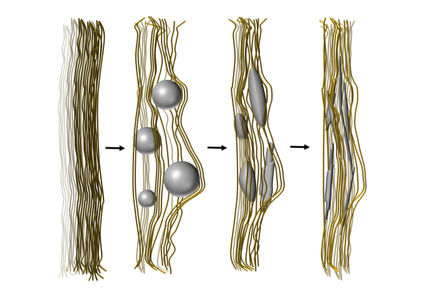Scientists and NASA astronauts developing near real-time osteoporosis and bone cancer test
A new test for offers the possibility of near real time monitoring of bone diseases, such as osteoporosis and multiple myeloma. The functionality of the test, which measures changes in calcium isotope ratios, has been validated on blood samples from NASA space shuttle astronauts.
Geochemists have developed extremely accurate ways of measuring calcium isotope ratios. Now a group of US geochemists, biologists and clinicians, from Arizona State University and the Mayo Clinic, have worked with NASA to put these techniques together to develop a new, rapid test of bone health.
These methods, using mass spectrometry, can discern the relative ratios of the calcium isotopes 42Ca and 44Ca in bone. The researchers found that lighter calcium isotopes, such as 42Ca, are absorbed from the blood into the bone during bone formation. Conversely, these light isotopes tend to be released into the bloodstream when bones break down. By measuring the ratios of the two isotopes in blood or urine scientists can calculate the rate of change of bone mass
According to lead researcher, Ariel Anbar (Arizona State University): "The big advantage of these measurements is that they show what is happening in the bone, whereas traditional bone health measurements, such as DXA scans, show what has happened. This means that we can have a real near-time view of what is happening in the bone, rather than comparing before and after, when damage may have already been done".
"Our goal is that these measurements will allow us to see bone breakdown in osteoporosis, but also can show us the progress of certain bone cancers, such as multiple myeloma".
The research was piloted in bed-bound subjects (who lose bone mass), but the best way for the researchers to test whether the system worked was in an ambient and less controlled population who are known to experience rapid bone loss. In space, because of zero gravity conditions, astronauts experience very rapid bone loss.
The researchers have also looked at a group of 71 patients who either had multiple myeloma or were at risk of multiple myeloma.
"What we saw with cancer patients was interesting. Those patients who tended to lose the lighter 42Ca isotope seemed to be the ones where the cancer was the most active. This means that the tests could theoretically feed into decisions on whether or not to treat a patient, for example if a cancer was dormant or growing very slowly, and to assess the effectiveness of treatments".
Other news from the department science
Most read news
More news from our other portals
See the theme worlds for related content
Topic World Mass Spectrometry
Mass spectrometry enables us to detect and identify molecules and reveal their structure. Whether in chemistry, biochemistry or forensics - mass spectrometry opens up unexpected insights into the composition of our world. Immerse yourself in the fascinating world of mass spectrometry!

Topic World Mass Spectrometry
Mass spectrometry enables us to detect and identify molecules and reveal their structure. Whether in chemistry, biochemistry or forensics - mass spectrometry opens up unexpected insights into the composition of our world. Immerse yourself in the fascinating world of mass spectrometry!




















































